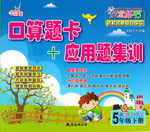题目内容
The earliest newspapers started in ancient Rome. They were handwritten news sheets. The first printed newspapers appeared in China during the Tang dynasty, which were printed from carved(雕刻的) wooden blocks. Modern papers first appeared in Venice, Italy in the middle of the 14th century. The newspapers of today, with advertising and a mixture of political, economic, and social news and comments, were started in Britain in the mid-18th century.
The main function of newspapers is to report news. Many newspapers also provide special information to readers, such as weather reports and television timetables. They also provide comments on politics, economics, arts and culture. Almost all newspapers depend on advertising to make money.
Nearly six out of ten adults in the United States and Canada read a newspaper every day. Seven out of ten read a paper each weekend. Readers search newspapers for de-tailed background information(背景资料)and analysis(分析). This is what television and radio news reports seldom offer. Newspapers tell readers what happened, and they also help readers understand what caused an event and how it will affect the world around them.
The workers at large newspaper companies work under a lot of pressure to bring news to readers as soon as possible. Reporters, photographers, artists, and editors collect articles in just a few hours. Page designers select articles, photos, advertisements, and eye-catching headlines to make the pages, and then rush their work to the printer. Printing workers may work overnight around printing presses to churn out more than 60,000 copies per hour.
【小题1】Which is the best title for the passage?
| A.Production of Newspapers | B.Functions of Newspapers |
| C.Publication of Newspapers | D.An Introduction to Newspapers |
| A.China | B.Ancient Rome | C.Italy | D.Britain |
| A.Most adults in America and Canada read newspapers every day. |
| B.The importance of newspapers in people’s lives. |
| C.Newspapers offer readers detailed information. |
| D.The effects of newspapers on readers. |
| A.newspapers will become less popular because of the development of TV |
| B.few newspapers have no advertising |
| C.many adults in America read newspapers every day |
| D.people can read about many different issues in newspapers |
| A.press | B.produce | C.publish | D.sell |
【小题1】D
【小题2】C
【小题3】B
【小题4】A
【小题5】B
解析试题分析:这篇文章讲述了报纸的起源和发展,以及报纸的功能,表达了报纸在人们的生活中发挥着非常重要的作用。
【小题1】主旨题,这篇文章主要给我们介绍了报纸的起源,发展及功能。故选D
【小题2】细节题。根据文章Modern papers first appeared in Venice, Italy in the middle of the 14th century.可知,现代报纸首次出现在意大利,威尼斯。故选C
【小题3】细节题。文章第三段主要讲了在美国和加拿大每天都有十分之六的人读报纸,十分之七的人每周都要读报纸,报纸给人们提供了很多事件的详细信息和分析。可知,报纸在人们的生活中有着非常重要的作用。故选B
【小题4】细节题。这篇文章讲了所有的报纸都包含广告,在美国,十分之六的美国人每天都读报纸,通过报纸,人们能了解很多不同的事情,文章并没有说随着电视的发展,报纸变得不受欢迎了。故选A
【小题5】推断题。根据文章Printing workers may work overnight around printing presses to churn out more than 60,000 copies per hour.印刷工人在印刷机旁边工作到深夜,要在每小时印刷出6万多份的报纸。可知,churn out的意思是印刷,生产。故选B
考点:社会历史类说明文
点评:本文文脉清晰,结构很好把握。说明文是历年高考很常见的文体,对于科技类的说明文比较难,而对于说物的文体较容易。本文中,把握好一个中心即报纸制作的历史。同时,此类文章细节题居多,在对文章看懂了的基础在仔细对比选项和文章,即可得出答案。

 口算题卡加应用题集训系列答案
口算题卡加应用题集训系列答案 综合自测系列答案
综合自测系列答案Language is always changing. In a society where life continues year after year with few changes, the language does not change, either. The earliest known languages had difficult grammar but a small, limited vocabulary. Over the century, the grammar changed, and the vocabulary grew. For example, the English and Spanish people who came to America during the sixteenth century gave names to all new plants and animals they found. In this way, hundreds of new words were introduced into English and Spanish vocabularies. Today life is changing very fast, and language is changing fast too.
There are several major language families in the world. Some scientists say there are nine main families, but other scientists divide them differently. The languages in each family are connected, and scientists think that they came from the same parent language About 3 percent of the people in the world speak languages that are not in these major families.
1. The early language had ______.
|
A.a lot of problems |
B.words and easy grammar |
|
C.words but no grammar |
D.grammar but not many words |
2.In the next few hundred years we can expect language to ______.
|
A.stay exactly the same |
B.change a great deal |
|
C.change only a little |
D.add more words and drop some grammar |
3.What this article shows is that ______.
|
A.languages change fast |
B.languages really don’t want to change |
|
C.language changes with changes of society |
D.Spanish and English change |
4. From this article we can see that ______.
|
A.language can change very slowly or very quickly |
|
B.Though our life changes, our language won’t change. |
|
C.we should give our plants new names |
|
D.English and Spanish are the only languages that have changes |